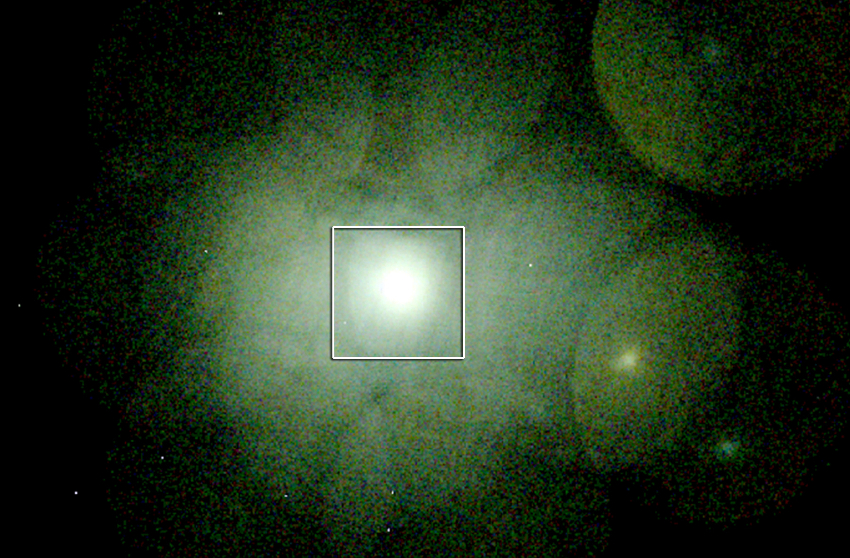
 Credit: JAXA
Credit: JAXA
Heavy Metal Mine
The chemical building blocks of life are produced by titanic supernova explosions. These explosions produce enormous hot remnants of glowing gas which distribute these chemicals to interstellar space. When supernovae occur throughout galaxies different regions of the galaxy can become more enriched in these complex elements. How far can this enrichment spread? Astronomers using the Japanese-US Suzaku X-ray observatory obtained sensitive measurements of the X-ray emission from the hot gas between the galaxies in the Perseus cluster of galaxies. The Suzaku data revealed enormous quantities of heavy metals, including chromium and manganese. This is the first time chromium and manganese have been detected in intergalactic space, and the total amount is enormous - enough to make 30 million suns of pure chromium. The image above shows a mosaic of the Perseus cluster taken by another Japanese-US X-ray satellite, the Advanced Satellite for Cosmology and Astrophysics (ASCA), and the box shows the location of the Suzaku observation. Data like these provide astrophysicists with a much more detailed view of the processes which pollute the Universe.
Published: December 7, 2009
<
HEA Dictionary ● Archive
● Search HEAPOW
● Other Languages
● HEAPOW on Facebook
● Download all Images
● Education ● HEAD
>

Each week the HEASARC
brings you new, exciting and beautiful images from X-ray and Gamma ray
astronomy. Check back each week and be sure to check out the HEAPOW archive!
Page Author: Dr. Michael F. Corcoran
Last modified Monday, 26-Feb-2024 17:36:47 EST


